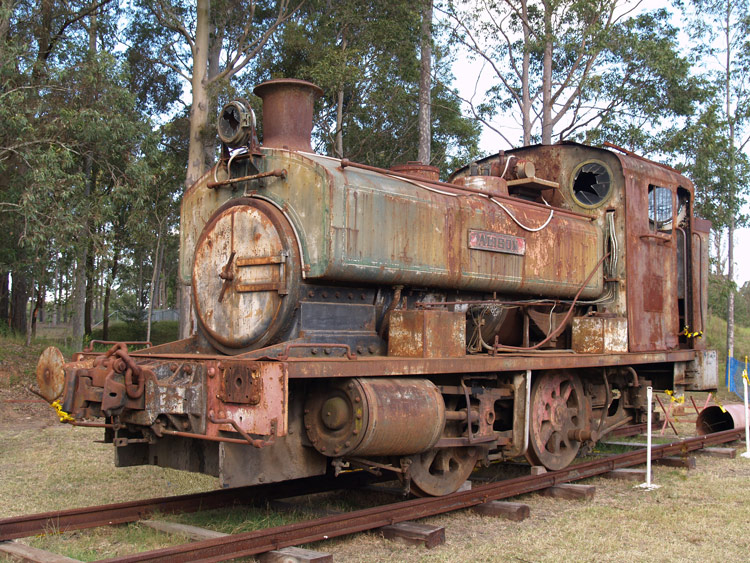|
|
Alison Andrew Barclay, Sons & Co. b/n 1738 of 1923 |
|

|
Alison newly arrived at the Richmond Vale Railway and
placed in the museum grounds, as seen on 18 April 2010. The livery of lined green apple green
with red headstocks, running boards and wheels was very worn by the time of
this photo. I understand Alison has since been cosmetically restored
by Richmond Vale Railway volunteers.
|

|
An earlier photo of Alison hiding from public view on the
long-term storage sidings at Thirlmere on 17 March 2003. It seems someone has liberated one of
the handsome tapered buffers. At this stage, various components such as the side rods were
stored within the cab.
A view of the other side of Alison on long-term storage
sidings at Thirlmere, dated 6 March 2005. If I remember correctly, rock-throwers
had made short work of any glass shortly after its move to the storage
sidings in 1983. The faded lined apple green livery is still visible, even
if heavily weathered. |
References
|
a |
Kramer, J.
'The Dorrigo Steam Railway & Museum - an Illustrated Guide', published
by the Dorrigo Steam Railway & Museum, 1987. |
|
b |
Wikipedia
page for Andrew Barclay, Sons & Co, retrieved 2
March 2021 |
|
c |
L. Oberg, 'Locomotives of Australia', published by J. W.
Books Pty Ltd, Brookvale NSW. 1982 reprint. |
|
d |
Eardley, G. H. 'Locomotives: A Guide - Enfield Railway
Museum', published by the NSWRTM, 1973. |
|
e |
Email from J.
Mullier received on 7 October 2010 |
Page updated: 7 March 2021
|
Government Railways: |
|
|||||||||
|
Private & Industrial Railways: |
|
